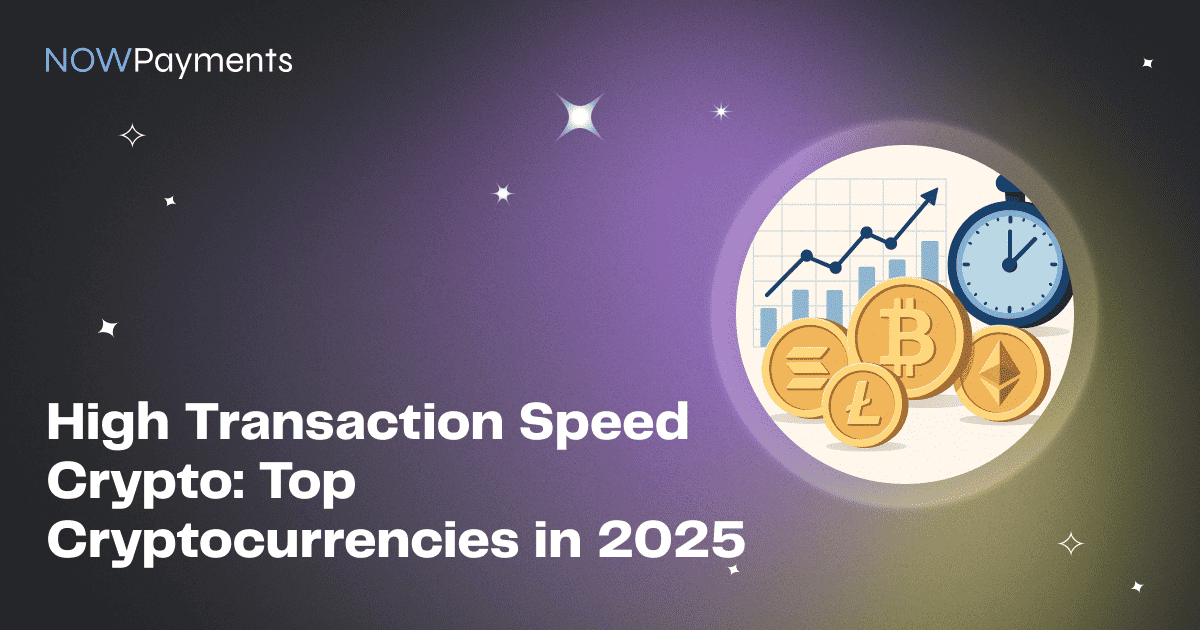Aside from decentralization, privacy, and security, another perk blockchain technology offers is speed. An innovation cannot tout itself as being the perfect substitute for traditional finance, yet take days to complete a transaction. Blockchain transactions typically take seconds. Premier blockchain, Bitcoin, processes a maximum of 7 transactions per second, while its closest rival, Ethereum, handles between 20 to 30 transactions per second.
Blockchain transaction speed is the rate at which transactions are processed and confirmed on a blockchain network. Transaction rates are vital to determining and understanding the efficiency, scalability, and intuitiveness of blockchain networks. Greater transaction speeds enhance user experiences and pave the way for blockchain technology to become more viable for real-world utilities including decentralized finance, payments, gaming, and digital identity.
The most popular metric for measuring transaction speed is transactions per second (TPS), which estimates the total number of transactions a network can handle in a second. Networks with higher TPS process more transactions, have lower latency, and rarely suffer congestion. These qualities come in particularly handy in scenarios like high-frequency trading and instant payments.
This is why since the advent of Bitcoin and Ethereum, nouveau blockchain networks have arisen to, among other qualities, offer blockchain users faster transaction rates. Here, we take a deep dive into ten of these crypto networks renowned for their speedy transaction times in 2025.
Why Transaction Speed Matters
Transaction speed is not just another blockchain feature; it is a necessity. One can assert that it is the most relatable feature to the blockchain user. A user may not readily appreciate hash rates or consensus algorithms, but they will relate easily to a transaction that completes within seconds without lagging. This is because delays can be frustrating, highly costly, and reduce trust in the technology. However, with greater transaction speed comes instant gratification for the user, whether they are swapping tokens on a decentralized exchange or minting an NFT. This is in addition to reducing latency, which decongests the network and enhances user trust.
These qualities are especially vital since blockchain and cryptocurrencies are being used in retail payments, cross-border remittances, and microtransactions in various Web3 spheres, including gaming and content platforms. Moreso, higher transaction speeds lay the foundation for scalability and adoption. Typically, blockchains with limited TPS struggle with heavy transaction load, leading to congestion and skyrocketing transaction fees. This was the issue the Bitcoin network faced with the introduction of Ordinals.
Another aspect where transaction speed plays an important role is interoperability. Gone are the days where blockchain networks acted independently. Nowadays, many Layer 1s and Layer 2s interact with one another in a bid to scale Ethereum by offering faster and cheaper off-chain transactions. Thus, it is necessary for these blockchains to have high TPS to ensure that cross-chain swaps, bridging, and other dApp operations are processed with minimal delay.
Transaction Per Second (TPS): A Breakdown
If a blockchain confirms 600 transactions in 60 seconds, its TPS is 10. As the term implies, transaction per second is the number of transactions a blockchain can successfully process within one second. Theoretically, the TPS parameter is simplistic, however, its practical application is largely nuanced.
When a blockchain states its theoretical TPS, it is the fastest possible processing rate the blockchain can carry out under ideal conditions such as optimal hardware and minimal traffic. This is determined by lab tests and simulations and may not reflect daily network usage. Conversely, practical or real-world TPS is more accurate because it is based on live transaction data from the blockchain. A typical example of theoretical vs practical TPS is seen with Solana: ideally, the network has a TPS of 65,000+, but in reality, it handles between 2000 to 4000 transactions per second.
Aside from network usage, TPS is affected by other variables like transaction type/weight and block time. Simple token transfers are often processed faster than weightier transactions like smart contract executions, NFT mints, and swaps since they require more computing resources. Similarly, networks with shorter block times – that is, the frequency with which a new block is added to the chain – process transactions more frequently. For context, Ethereum has a block time of 12.04 seconds, while Solana has a tiny fraction of that at 0.4 second – hence it naturally has a greater TPS than the former.
It is important to note that though TPS is an important blockchain parameter, it does not equal finality. This is because a blockchain may speedily process thousands of transactions, but if these transactions are not confirmed quickly, true finality cannot be achieved.
Ten Fastest Cryptocurrencies with the Fastest Transactions in 2025
Currently, there are at least 1000 blockchains grouped into public, private, hybrid, and consortium blockchains. These blockchains have varying levels of transaction speeds with many touting themselves as the fastest. This is why our top ten ranking must sift marketing hype from actual performance. To do this, we evaluated each network based on five parameters: practical TPS, block finality & confirmation time, ecosystem activity, fee efficiency, and sustained network performance.
- Practical TPS: This has been thoroughly explained already. We ranked blockchains based on their live TPS and not their theoretical projections.
- Block finality & confirmation time: Speed is not the only factor considered, we also factored in how quickly transactions are confirmed and finalized on these networks. Finality is that point where a transaction becomes irreversible and permanently part of the blockchain. Thus, this list includes blockchains that are an efficient combination of high throughput, low latency, and near-instant finality.
- Ecosystem activity: Recall that the TPS parameter considered the number of transactions handled per second. This means that the vibrancy of the blockchain ecosystem is important. High TPS only matters when people are actively using the network. Therefore, only networks with real adoption across diverse spheres are considered.
- Fee efficiency: Another important factor for our ranking is fee efficiency. Priority was given to blockchain networks that do not sacrifice speed for high transaction fees.
- Sustained network performance: Selected blockchain networks must also offer speed even at peak demand. This means that they need to be optimum and reliable during high-traffic scenarios like token airdrops, massive NFT mints or drops, and DeFi surges.
Through this multidimensional approach, here are 10 blockchains pushing the envelope of speed in 2025.
- Solana
- Hedera Hashgraph
- Cosmos
- Neo
- Avalanche
- EOS
- Algorand
- Nano
- Stellar
- Waves
1. Solana (SOL)

Solana is one of Ethereum’s biggest rivals known for its high speed and low fees. The network boasts an average of 2,200 TPS compared to Ethereum’s 11.75. Its theoretical TPS is projected to be over 65,000 – a figure that still greatly surpasses Ethereum’s 62.34. Solana transactions have a finality of 12.8 seconds.
With about 6.7 million active addresses per day, Solana has a thriving ecosystem. It has become a launchpad for diverse meme tokens and NFTs. Despite its robust activity, the network remains cost effective with an average cost per transaction of $0.00025, a fraction of Ethereum’s $0.59. Moreso, it keeps making significant improvements towards addressing historical network stability issues.
SOL, the native token of the network, is used primarily for paying transaction fees, interacting with smart contracts, and staking. As the network’s activity booms, particularly through NFTs and DeFi protocols, SOL’s value continues to remain robust.
2. Hedera Hashgraph (HBAR)

Hedera is known for its high throughput and energy efficiency which it achieves through a unique Hashgraph consensus algorithm. It is capable of handling 10,000 transactions per second, with a finality of 3 to 5 seconds. The network has a fixed price per transaction of $0.0001 – a fee which does not fluctuate irrespective of network usage. Hedera hosts a wide range of applications, including supply chain solutions and DeFi platforms. Its scalability showcases its consistent uptime and minimal network outages.
HBAR is the native and cost-efficient utility token of Hedera used to pay for transaction fees, reward validators, and support decentralized applications.
3. Cosmos (ATOM)
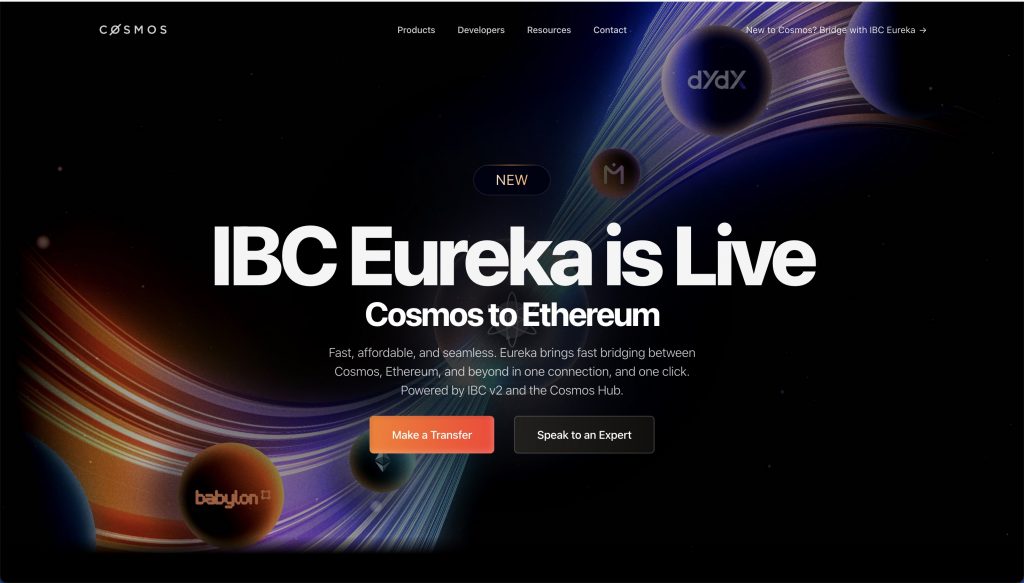
With a scalable and interoperable architecture, Cosmos can also handle up to 10,000 transactions per second across its interconnected zones. These zones – which include Osmosis, Juno, Evmos, Terra 2.0, and Akash Network – are independent blockchains connected to the central Cosmos Hub through the Inter-Blockchain Communication (IBC) protocol. This is why Cosmos is referred to as the “Internet of Blockchains.”
Cosmos achieves finality within 6 to 7 seconds and facilitates a growing network of interoperable blockchains. Though its transaction fees vary by zones, the average transaction fee on the network is around $0.01.
ATOM is the primary token of the Cosmos Hub. It secures the network through staking, pays for transaction fees, and allows stakers to participate in governance decisions. ATOM’s value and relevance stems from the connection of more zones via the IBC protocol.
4. Neo (NEO)
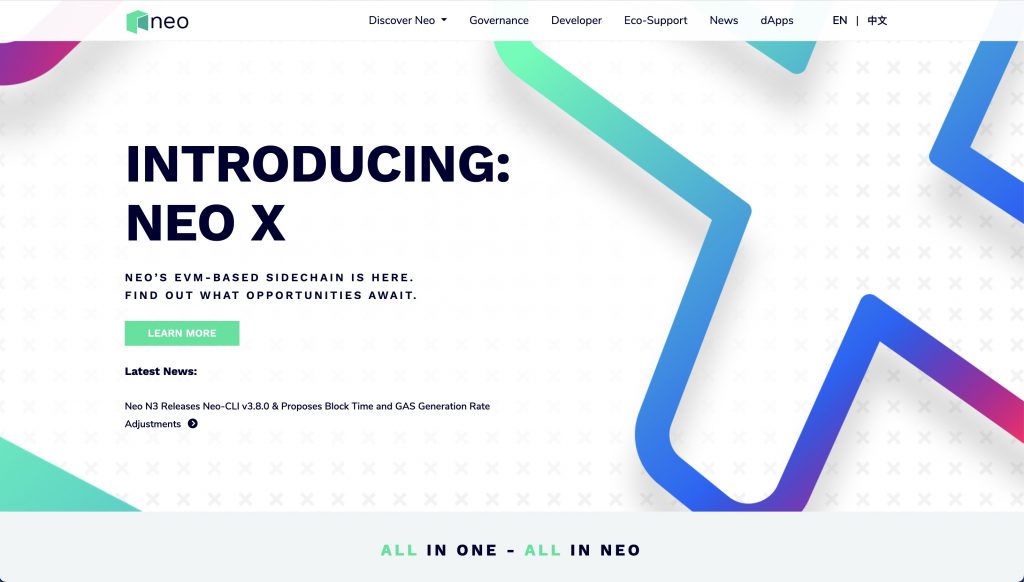
Once dubbed “Chinese Ethereum,” Neo processes up to 1,000 transactions per second. It utilizes a 15- to 20-second block time with quick finality. The average transaction fee on the network is $0.0012 which is paid in GAS tokens. System fees are burned, while network fees are plowed into consensus nodes.
NEO is the native token of the blockchain and it is complemented by its utility counterpart, GAS. So while NEO is used for governance and staking, GAS pays for transactions and smart contract execution fees.
5. Avalanche (AVAX)
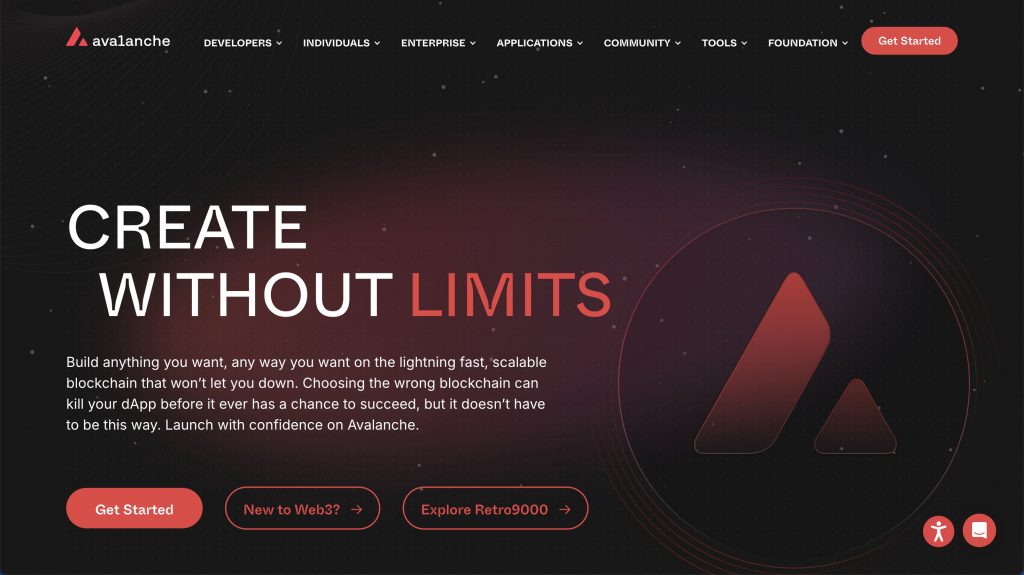
Avalanche is popular for its rapid finality and customizable subnets. The layer 1 blockchain has a transaction throughput of 2,500 TPS with near-instant finality of ~0.8 second. One reason for Avalanche’s high throughput is its subnets. These are custom blockchains that operate independently while settling on the Avalanche Primary Network. Projects such as DeFi Kingdoms and Shrapnel employ subnets to tailor their security, speed, and transaction fee.
In addition to the subnet architecture, other highlights of Avalanche’s thriving ecosystem include being home to DeFi protocols like Trader Joe and Benqi, NFT/gaming projects like Ascenders and Shrapnel, and real-world asset applications such as Avalanche Evergreen Subnets used by JP Morgan and Citi for tokenizing financial instruments.
AVAX, the native token of the Avalanche network, is important for transaction fees, staking, and creating custom blockchains through the network’s subnets. All transaction fees are burned, keeping the token deflationary.
6. EOS (EOS)
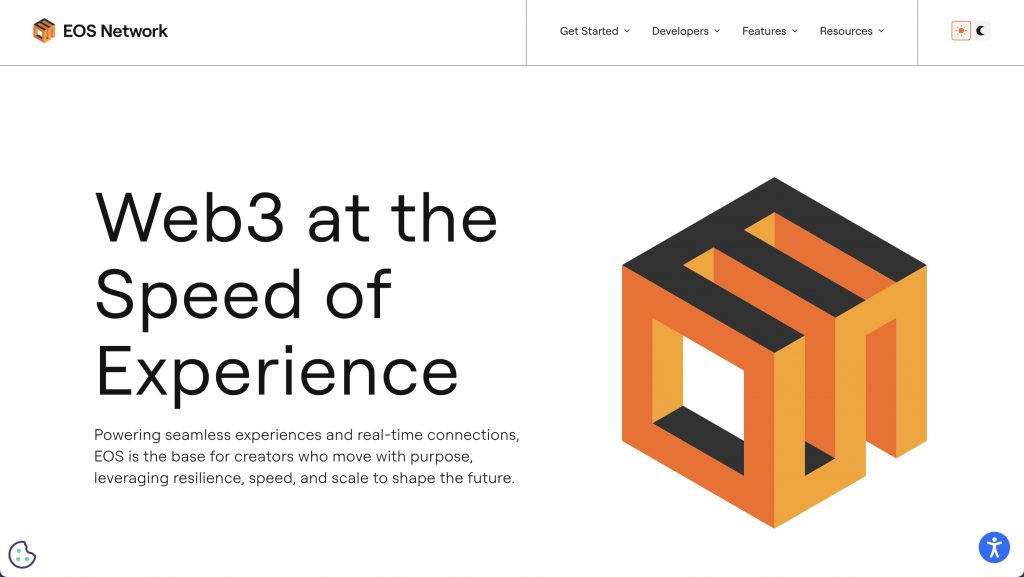
Designed for scalability and intuitive dApp development, EOS scales to at least 4,000 TPS in practice and can theoretically handle over 17,000 transactions per second. The network produces blocks every 0.5 second, which is much faster than Bitcoin’s 10 minutes, Ethereum’s 12 seconds, and Optimism’s 2 seconds. Its Savanna consensus algorithm also allows it to achieve true finality within a second.
EOS has a robust ecosystem that powers smart contract apps (e.g. Defibox and Upland), interoperability (as seen in Antelope IBC), performance & upgrades (e.g. Mandel), and enterprise & governance experiments.
The EOS token has a wide range of utilities – from accessing and utilizing network resources to paying for transactions and participating in governance.
7. Algorand (ALGO)

With its Proof-of-Stake consensus, Algorand achieved a record 5,716 transactions per second last May. Theoretically, it is touted to process up to 10,000 transactions per second. The network achieves an instant finality with a block time of about 2.85 seconds.
Furthermore, the Algorand ecosystem is home to several initiatives under different categories like DeFi (e.g. Algofi, Pact, Folk Finance), green blockchain & carbon credit tokenization (e.g. PlanetWatch, ClimateTrade), and developer tools (e.g. Algorand Virtual Machine and a variety of SDKs).
ALGO, Algorand’s native token, is used to pay fees, stake in the consensus mechanism, and interact with the dApps on the blockchain.
8. Nano (XNO)
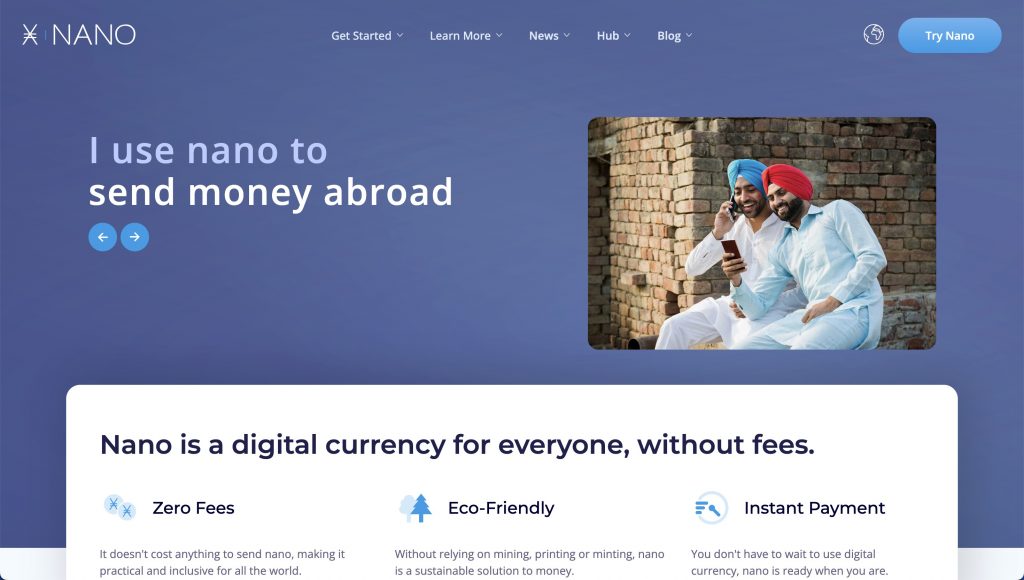
Nano is a feeless and lightning-fast blockchain capable of handling over 1000 transactions per second, with stress testing putting the figure at up to 7,000 TPS. Due to its Open Representative Voting (ORV), the network achieves instant transaction finality within less than a second. Its zero transaction fees makes it one of the most cost-effective networks suitable for micro payments.
The Nano network has a budding ecosystem of integrations with wallets and platforms focused on peer-to-peer payments, tipping, and microtransactions. The network maintains extremely low energy consumption, consistent uptime, and high speed without relying on intensive hardware and mining. Though Nano is a feeless network, XNO, its native token, finds application in payments and donations.
9. Stellar (XLM)
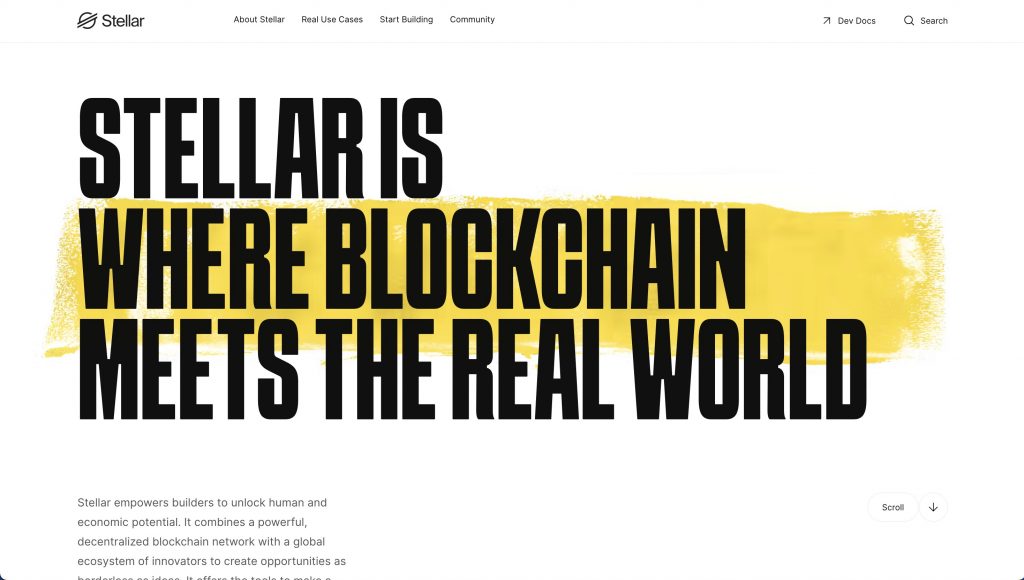
Stellar is optimized for fast, low-cost borderless payments. This is the reason it is not limited by TPS. Its maximum rate is set at 200 TPS, which can be raised through a vote by validators. Although many sources peg Stellar’s transaction speed at 1,000 TPS, the blockchain officially stated that it rarely reaches 200 TPS, yet transactions are resolved within seconds. Using its Stellar Consensus Protocol (SCP), the network achieves finality within 2 to 5 seconds, making it an ideal candidate for remittances.
Stellar has a bubbling ecosystem proven by its wide adoption by fintech firms, NGOs, and cross-border payment solutions such as MoneyGram, Circle, and Velo. The average cost per transaction on the network is $0.000005. The network is known for its stability and reliability having not suffered a major downtime since 2014.
XLM is Stellar’s native token and is used to pay for transactions, prevent spam, and serve as a bridge currency in cross-border transfers.
10. Waves (WAVES)
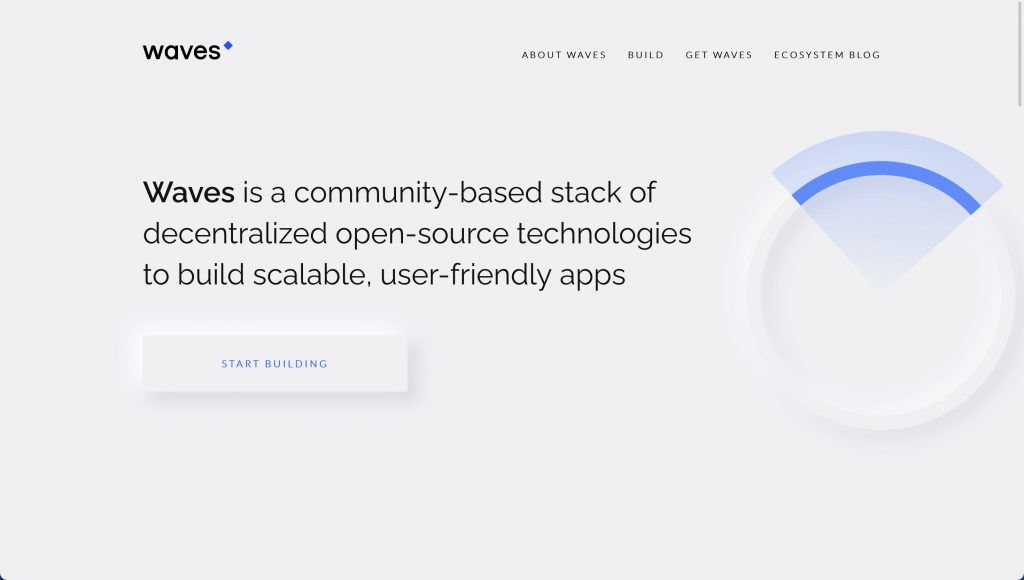
A fast and flexible blockchain. Waves processes up to 100 transactions per second. Its Leased Proof of Stake (LPoS) consensus enables it to have a block time of ~6 seconds, achieving finality within 30 seconds.
Waves is a developer-friendly L1 for dApps (e.g. Vires Finance), decentralized exchanges (Puzzle Swap, Waves.Exchange), DAOs & governance tools, custom token creation, NFTs, bridging, and cross-chain liquidity.
Like many native tokens, WAVES is used to pay for transaction fees, reward validators, and support governance decisions. It also controls network operations like launching custom tokens, interacting with DeFi protocols, and cross-chain bridging.
Comparison Table: Top 10 Fastest Blockchains by TPS & Speed (2025)
| Blockchain | Practical TPS | Finality (sec) | Average Fee ($) |
| Solana | 2,200 | 12.8 | 0.00025 |
| Hedera Hashgraph | 10,000 | 3 – 5 | 0.0001 |
| Cosmos | 10,000 | 6 – 7 | 0.01 |
| Neo | 1,000 | 15 – 20 | 0.0012 |
| Avalanche | 2,500 | ~0.8 | Dynamic |
| EOS | 4,000 | 1 | Resource staking |
| Algorand | 5,716 | 2.85 | ~0.001 |
| Nano | 1,000 | < 1 | 0 |
| Stellar | 200 | 2 – 5 | 0.000005 |
| Waves | 100 | within 30 | Low |
Conclusion
Blockchain networks are pushing boundaries to meet the demand for fast, efficient, and scalable systems. This has inspired a new generation of protocols designed to optimize for throughput, cost, and finality. As shown in this list, transaction speed is not just a fancy feature but a core requirement for blockchain applications – from DeFi and NFTs to gaming and remittances. Whether you prioritize instant finality, low fees, or developer flexibility, the high-speed blockchains examined above offer deep insights into the future of digital finance.
NOWPayments is the leading crypto payment gateway that combines speed, scalability, and a user-friendly experience. This makes it ideal for both businesses and individuals seeking an easy way to accept crypto payments. Supporting over 150 cryptocurrencies spread across different blockchains – including high TPS networks like NEAR Protocol and Polygon – NOWPayments offers low fees and transparent pricing. In fact, it’s one of the most cost-effective payment gateways in the market. Its easy integration and advanced API make it a powerful tool for developers and businesses looking to integrate a payment gateway into their websites, apps, and e-commerce platforms.
Moreso, leveraging the scalability and high transaction speed of modern blockchains allows NOWPayments to distinguish itself as a versatile and efficient payment solution for individuals and businesses who want to incorporate cryptocurrency into their payment ecosystem. Start today and experience the best of a premium crypto payment solution.

